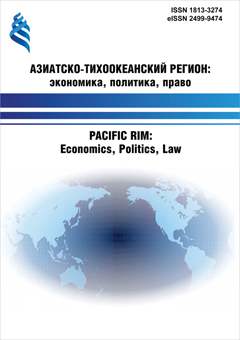RUSSIA'S TURN TO THE EAST IN THE CONTEXT OF STRENGTHENING OF REGIONAL AND GLOBAL SECURITY IN ASIA
DOI:
https://doi.org/10.24866/1813-3274/2023-1/97-105Keywords:
RF, PRC, Asia-Pacific, Development and Security Institutions, new architecture of international relations, new world orderAbstract
The article is devoted to the analysis of the strategy of the Russian Federation “Pivot to the East”, a topic that is extremely acute and timely for research. It is of great practical importance, its relevance is caused by fundamental changes in international relations, including in Asia, where, unlike Europe and the United States, a new world order is being shaped, and regional and global security is being strengthened. In this complex and contradictory process, Russia is striving to take its decent place and make a considerable contribution to strengthening the cause of peace. The impetus for this ‘Eastern’ choice was the destructive process in Europe and the anti-Russian sanctions of the West led by the United States. The author emphasizes that relations between countries and peoples in the Asia-Pacific region are developing in the face of old and new problems. Their solution requires the formation of regional security institutions in Asia that would mitigate international tension created through the fault of the United States and its Far Eastern allies. The article substantiates the goals and objectives in Russia’s strategy of “Pivot to the East”. The object of the study is the policy of “Pivot to the East” towards the Asia-Pacific region in the context of the creation of a new system of international relations and a new world order. The subject is Moscow’s strategic course to strengthen national, regional and global security in the Asia-Pacific region. Research methods. The research concept of the author is based on the following approaches: civilizational; systemic; comparative. The results of the study are that Russia’s strategy to the East arose due to the following circumstances : 1) strengthening the role of the East Asian countries in the world, where new centers of political, economic and financial power are being shaped; 2) the aggressive course of the United States and its NATO allies, which since 2014 have been intensifying their policy of ‘squeezing’ Russia out of the Western direction of development; 3) the urgent need for Russia’s actual participation in the creation of security institutions in Asia; 4) Russia’s using the economic, financial, technological potential of the East Asian neighbors (primarily China’s strategic partner) in order to accelerate the development of the Far East.



